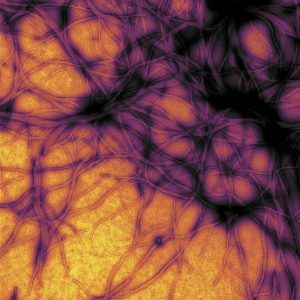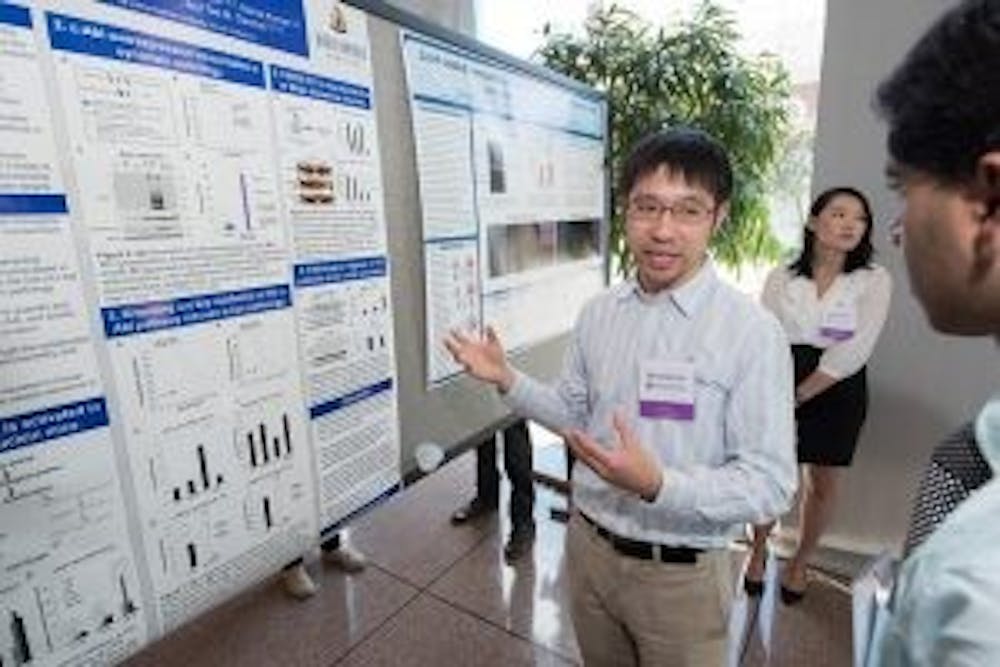Preston Ge, a senior Neuroscience major, worked with the Ted and Valina Dawson lab to publish his research on Parkinson’s Disease in Science magazine. His findings, he says, will not only provide a novel therapy for patients with Parkinson’s disease but also help establish how research for neurodegenerative disease is conducted in the future.
“We know that Parkinson’s Disease leads to more and more cell death as you get older. It’s thought that a large part of this progression is caused by the spread of misfolded protein clumps across the brain. But nobody knows how this occurs,” Ge said. “We discovered a protein that plays a crucial role in the spread of these misfolded clumps and found that if we deleted or blocked this protein, it would substantially slow down disease progression in mice.”
With the identification of this protein, Ge says that his lab achieved two major breakthroughs.
“It provides a new potential drug target for Parkinson’s, which is important because none of the [current] treatments actually slow down disease progression. Right now, they only treat the symptoms,” he said.
Even more long lasting, Ge hopes, is the foundation of a new research paradigm.
“[Our study] introduces an experimental paradigm, basically a way of conducting research that can allow for the identification of other proteins involved in the disease progression — not just in Parkinson’s but also other neurodegenerative diseases like Alzheimer’s and Huntington’s,” he said.
But getting to this stage was not an easy feat. Ge says that the process of publishing can be a long one filled with revisions.
“Once we were able to get all the data together [and] write the manuscript, it was rejected at first,” Ge said. “It was a friendly rejection though... We did a long series of revision experiments that took about six months... When we submitted to Science, they asked for a few additional edits, which took maybe a week or two... and it was accepted when we resubmitted it a third time. Altogether, that process took about nine months starting from the first submission.”
Even before that, at the experiment and data collection stage, Ge says that he had to overcome many obstacles.
“There were some experiments that just didn’t work. And not just because I made a mistake [then] it works the next day. I try to do it day in and day out, and it doesn’t work no matter what I do,” he said. “I’ve had two experiments that were like that. One took about two to three months to troubleshoot.”
In particular, he credits the support of his principal investigators, Ted and Valina Dawson, for helping him amidst experimental troubles.
“Even in the darkest days, when all my experiments were failing, they adopted an encouraging and positive attitude,” Ge said. “This was really important for me, because it can be frustrating with failed experiments, but [they got me] to see the bigger picture.”
Overall, Ge says that his experience at the Dawson lab has helped him understand the research process at a deeper level.

“A lot of times when you first join a lab, you are told to do certain experiments but you are not sure why,” he said. “[Now], having worked there three or four years, I’ve built up the knowledge to really understand what questions we are trying to answer and why the techniques we are trying to use are the best ones to try to address those questions.”
At the Dawson lab, Ge says that collaboration is key.
“For one study, we will need people who know how to work with proteins, RNA, mice or stem cells. [So] we have researchers with a variety of talents and expertise,” he said. “We literally just go up to someone and ask them for their thoughts on an experiment. People are, within reason, very willing to help each other out.”
In addition to his research, Ge is currently applying to MD-PhD programs, in which he hopes to continue his understanding of the brain.
“I’m interested in studying the molecular and cellular changes that occur in our brain as we age and how those changes lead to neurological diseases. I’m hoping [to] also work with patients to understand how aging affects patients,” he said. “So we basically integrate clinical care of patients, clinical research, with running a basic research lab to move forward a more holistic understanding of aging from the patient’s perspective and from a scientist’s perspective.”
Valina Dawson praised Ge for his abilities and is confident he will succeed in whatever he pursues.
“Preston is very smart and quick to pick up on scientific details and understand theory and new directions. He is also a terrific person who is quick to help others in the lab. He is both well-liked and well-respected,” she wrote in an email to The News-Letter. “[He] has the talent and the drive to do whatever he wants.”
As for advice for other undergraduate researchers, Ge stresses the importance of collaboration.
“You have to be able to take advantage of literature, but also of human resources — other people in the lab, representatives of the company developing the reagents and other labs with expertise in your technologies,” he said. “You need to be resourceful... That is true of any obstacle you face in research. Always remain flexible, patient and resilient.”





